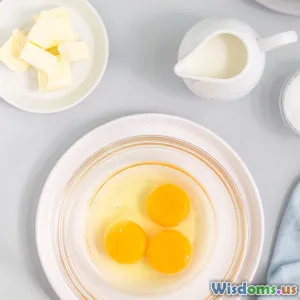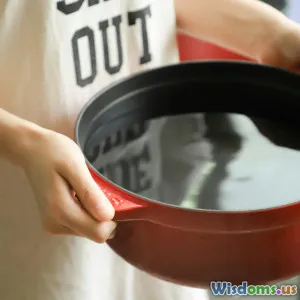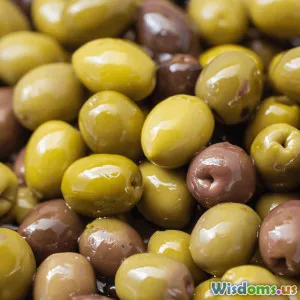
What Causes Cakes to Sink and How You Can Prevent It
7 min read Explore why cakes sink and learn practical tips to bake perfectly risen cakes every time. (0 Reviews)
What Causes Cakes to Sink and How You Can Prevent It
Baking a cake can be a delightful experience, but nothing is more frustrating than pulling a beautifully smelling cake out of the oven only to find it has sunk in the middle. Why does this happen? More importantly, how can you stop it? This detailed guide will explore the primary reasons your cakes sink and provide practical tips and expert insights to help you bake perfectly risen cakes every time.
Understanding the Science Behind Cake Sinking
Cake sinking typically happens during the baking process when the cake’s structure collapses before it has fully set. More often than not, it’s caused by one or a combination of issues related to ingredients, baking techniques, or oven conditions.
The Role of Cake Structure
Cakes rely on a delicate structure formed by the proteins in flour and eggs that trap air and steam, helping the batter rise. If this framework doesn’t set properly during baking or is disturbed later, the cake will lose its support and sink.
Common Causes of Cake Sinking
1. Underbaking
One of the most frequent culprits. When the cake hasn’t baked long enough, the inside remains too moist and doesn't have time to set properly, causing the cake to collapse.
Example: A baker might follow a recipe exactly but open the oven early to check on the cake, causing temperature drops and uneven baking.
Tip: Use a toothpick or cake tester to check for doneness. It should come out clean or with a few moist crumbs.
2. Overmixing the Batter
Mixing incorporates air, which initially helps the cake rise. But too much mixing develops the gluten in flour excessively, making cakes tough and causing them to deflate once in the oven.
Scientific Insight: Gluten forms long strands in batter, and overmixing can cause these strands to trap air unevenly or collapse during baking.
3. Incorrect Oven Temperature
Oven temperature can make or break a cake.
- Too low: The batter heats too slowly, so it expands initially but never sets, leading to sinking.
- Too high: The outside sets too quickly while the inside remains uncooked, causing the cake to sink after cooling.
Real-world advice: Use an oven thermometer to ensure accuracy since built-in thermostats can be off by 25 degrees or more.
4. Too Much Leavening Agent
Baking powder or baking soda produces gas to help the batter rise. If the amount is off, the cake can rise too fast and then collapse.
Example: Excess baking soda can cause the center to puff and then cave in because the structure can’t hold the rapid expansion.
5. Opening the Oven Door Early or Too Often
Sudden temperature drops shock the cake, disrupting the rise and structure setting.
Tip: Wait until at least 3/4 way through the baking time before peeking.
6. Improper Use of Ingredients
- Expired leavening agents can lose potency.
- Using the wrong pan size changes cooking time and heat distribution.
- Incorrect ingredient measurements throw off the batter’s balance.
How to Prevent Cakes From Sinking
Follow Precise Measurements and Use Fresh Ingredients
Baking is a science. Accurate measuring of flour, sugar, fats, and leaveners ensures proper texture and rise.
- Use a kitchen scale for best results.
- Check baking powder/soda expiration regularly.
Control Oven Temperature
- Preheat your oven fully before baking.
- Use an oven thermometer.
- Avoid opening the door prematurely.
Mix Batter Carefully
- Cream butter and sugar properly but stop once mixed.
- Fold in dry ingredients gently to avoid tough batter.
Choose the Right Bakeware
- Use recommended pan sizes.
- Use metal pans for better heat conduction.
Bake at the Correct Time
- Test with inserted toothpick near the end of baking.
- Adjust time based on pan size or ingredient variations.
Avoid Overloading the Batter With Liquids
Extra liquid disrupts the batter’s structure, making it collapse. Be wary of adding too much milk or water.
Expert Insights
Chef Rose Levy Beranbaum, author of The Cake Bible, emphasizes that "patience is key—both in mixing and baking." She advises bakers to resist opening the oven and to trust the recipe's timing and temperature.
Similarly, America's Test Kitchen strongly recommends adding leavening agents fresh for every baking session because their effectiveness diminishes.
Final Thoughts
Sinking cakes are the bane of home bakers, but they’re usually avoidable. By understanding what causes a cake to sink—from ingredient mistakes to baking habits—you can train yourself to troubleshoot and prevent it.
Remember, baking is part precision and part art. Every oven and recipe can behave slightly differently. With practice and these scientifically-backed tips, your cakes will consistently rise beautiful and tall, ready to dazzle at any occasion.
Happy baking!
Rate the Post
User Reviews
Popular Posts





















